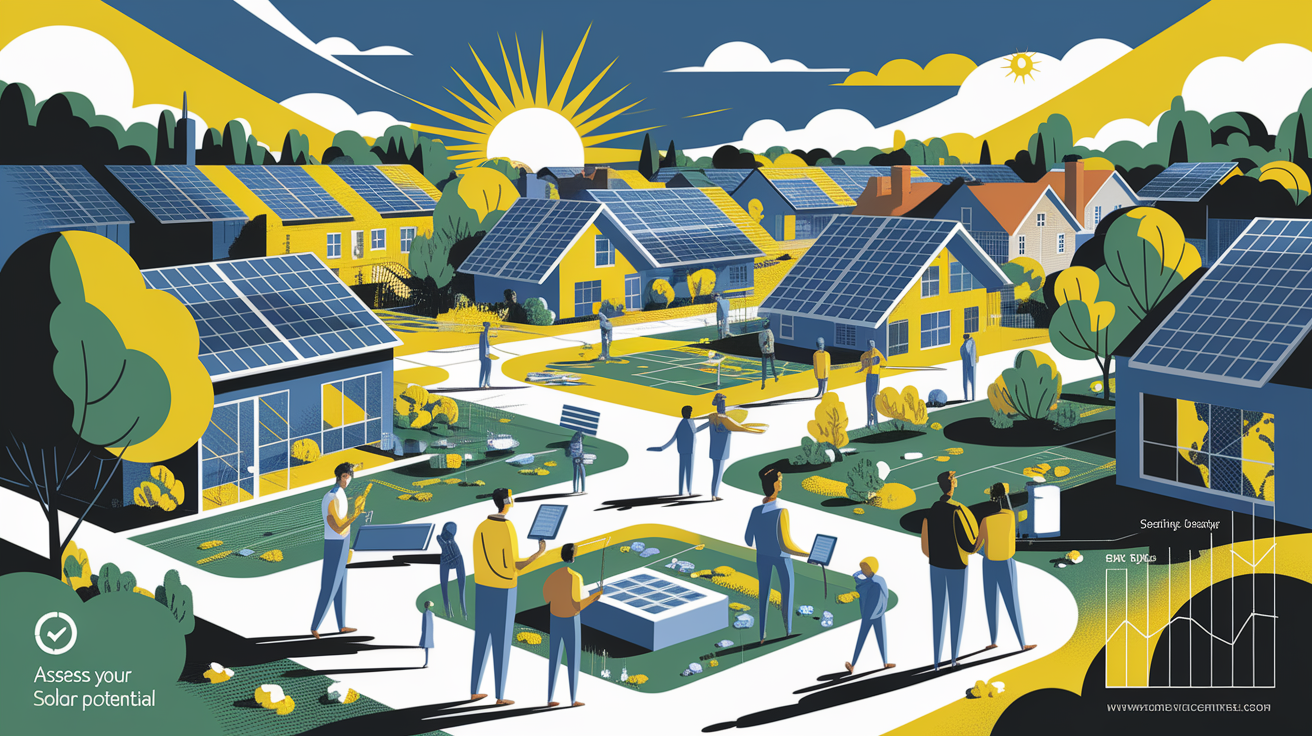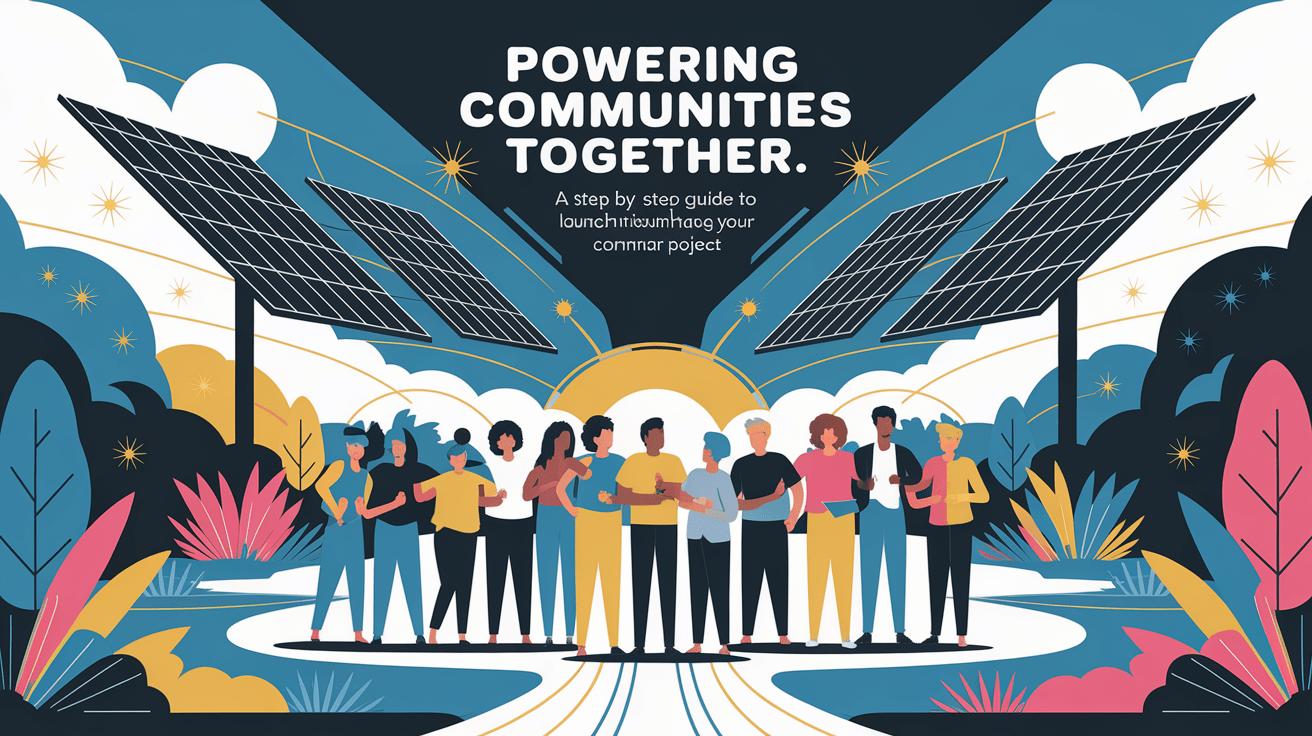Powering Communities Together: A Step-by-Step Guide to Launching Your Community Solar Project
Sunrise to Solar: Kickstarting Your Community Project
Community solar projects—sometimes called solar gardens or shared solar—are revolutionizing how neighborhoods access renewable energy. These projects enable residents, businesses, and nonprofits to subscribe to a portion of a solar farm’s output, earning monthly energy credits without installing panels on their own property. Beyond clean energy generation, these initiatives deliver local economic benefits, strengthen grid resilience, and expand access to households that traditionally have been excluded from solar adoption. Starting a community solar project from scratch involves structured planning, stakeholder engagement, and precise execution.

Assess Your Community’s Solar Potential
The first step in developing a successful community solar program is a thorough solar feasibility study—evaluating both technical and economic viability. A prime location is critical: sites should be relatively flat or have suitable large rooftops, receive unobstructed sunlight, and have close proximity to existing grid infrastructure to reduce interconnection costs.

- Site Assessment: Determine if the land or rooftop area can host a photovoltaic system. Consider shading, orientation, and structural capacity.
- Energy Needs: Estimate total project capacity based on potential subscriber demand. For example, a 1 MW solar array can generally serve 150–200 average households.
- Environmental Impact: Conduct preliminary ecological reviews to maintain compliance and community goodwill.
A strong potential site can accelerate regulatory approval and improve financing terms, while poor location choices can result in costly delays.
Assemble Your Core Team and Stakeholders
Building a reliable team is central to community solar success. Your development group should include a qualified solar developer, a project manager experienced in solar project planning, legal counsel familiar with community renewable energy regulations, and outreach coordinators to engage prospective subscribers.

- Local Authorities: Secure buy-in from municipal leaders to streamline permitting and zoning.
- Utility Company: Establish early communication for an interconnection agreement to link your solar array to the grid.
- Community Organizations: Partner with neighborhood associations, nonprofits, and cooperatives to foster broad participation.
Engaging stakeholders early encourages transparency and builds momentum for recruitment into your solar subscription model.
Navigate Regulations and Financing Options
Compliance and funding are the twin pillars that will either strengthen or stall your project. On the regulatory side, understand your state’s virtual net metering rules, zoning ordinances, and renewable portfolio standards. Identify the permits your project will require—ranging from building approvals to environmental clearances.

On financing, evaluate pathways including:
- Grants & Incentives: Many federal and state programs, as outlined in community solar basics, offer funding for clean energy infrastructure.
- Investor Partnerships: Seek equity from local businesses or renewable energy cooperatives.
- Power Purchase Agreements (PPAs): Contract with your utility for fixed-rate sale of solar output.
- Community Bonds: Allow residents to invest directly, generating local ownership.
Robust financing not only supports procurement and construction but also builds trust with subscribers.
Design, Procure, and Launch Your Solar Array
With your plan funded and approved, move into technical execution. This phase demands meticulous solar project management to avoid overruns.
- System Design: Finalize engineering plans, including photovoltaic array specifications, inverter selection, and grid-tied configurations.
- Equipment Procurement: Source high-quality solar panels, racking systems, and monitoring hardware based on project scale and expected lifetime performance.
- Construction Phase: Engage experienced installers to assemble your grid-tied solar system safely and efficiently.
- Subscription Enrollment: Offer transparent terms for prospective subscribers, detailing energy credits and monthly fees.
Upon completion, commission the array, ensure all interconnection testing is finalized, and begin delivering energy credits to participants’ utility bills—a core mechanism explained in community solar structures.
Radiant Futures: Sustaining and Scaling Your Project
Launching is only the beginning for a thriving local solar initiative. Sustainable success hinges on proactive solar operations maintenance and continued community engagement.
- Performance Monitoring: Use system analytics to track kilowatt-hour output and maximize efficiency.
- Subscriber Retention: Maintain clear communication on billing, credits, and environmental impact.
- Scaling Opportunities: Expand capacity or replicate the model in nearby towns to broaden impact, as highlighted in community solar benefits.
By combining strong technical oversight with active public involvement, community solar projects can transform neighborhoods into engines of clean energy growth. Each installation not only supplies renewable electricity but also reinforces economic resilience and collective ownership—ensuring the benefits shine for decades.






